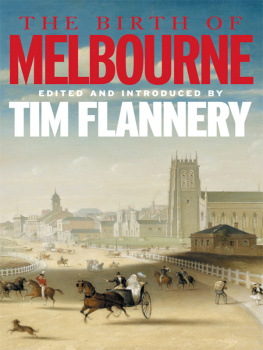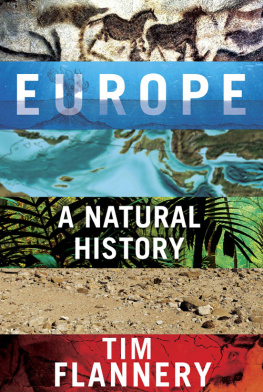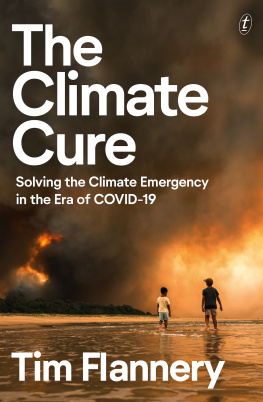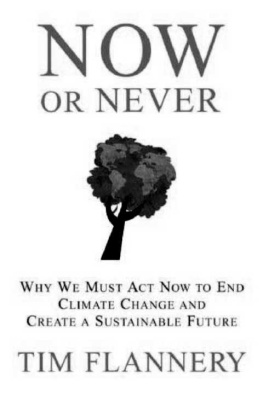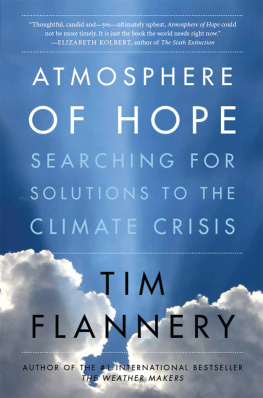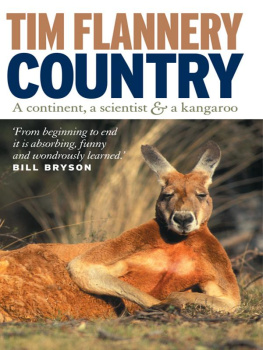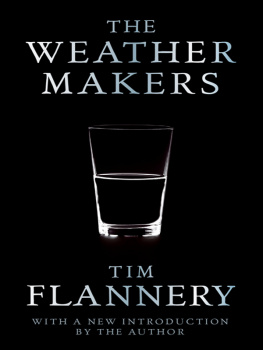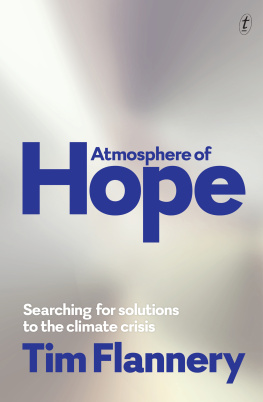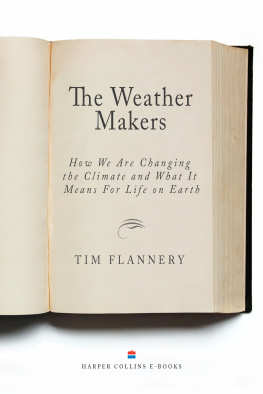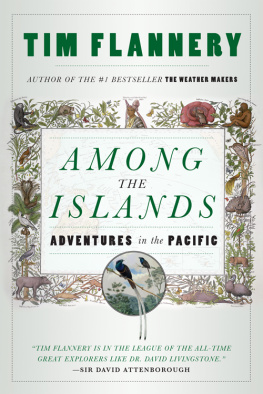AN EXPLORERS
NOTEBOOK
Other books by Tim Flannery
The Weather Makers
Mammals of New Guinea
Tree Kangaroos: A Curious Natural History
with R. Martin, P. Schouten and A. Szalzay
Possums of the World: A Monograph of the
Phalangeroidea with P. Schouten
Mammals of the South West Pacific and Moluccan Islands
Watkin Trench 1788 (ed. )
The Life and Adventures of John Nicol, Mariner (ed.)
Throwim Way Leg
The Birth of Sydney
Terra Australis: Matthew Flinders Great Adventures in the Circumnavigation of Australia (ed.)
The Eternal Frontier
The Explorers
A Gap in Nature with P. Schouten
Astonishing Animals with P. Schouten
Chasing Kangaroos
The Future Eaters
Now or Never
Here on Earth
Among the Islands
TIM
FLANNERY
AN EXPLORERS
NOTEBOOK
ESSAYS ON LIFE, HISTORY & CLIMATE
Atlantic Monthly Press
New York
Copyright 2007 by Tim Flannery
Jacket design by Christopher Moisan; Jacket photographs courtesy of the author
All rights reserved. No part of this book may be reproduced in any form or by any electronic or mechanical means, including information storage and retrieval systems, without permission in writing from the publisher, except by a reviewer, who may quote brief passages in a review. Scanning, uploading, and electronic distribution of this book or the facilitation of such without the permission of the publisher is prohibited. Please purchase only authorized electronic editions, and do not participate in or encourage electronic piracy of copyrighted materials. Your support of the authors rights is appreciated. Any member of educational institutions wishing to photocopy part or all of the work for classroom use, or anthology, should send inquiries to Grove/Atlantic, Inc., 154 West 14th Street, New York, NY 10011 or .
All photographs used in this book are from the authors collection.
Drawing on page 9 by Peter Schouten.
Grateful thanks to the State Library of Victoria for assistance with
the John Audubon image on page 206.
Getting to Know Them first appeared in the New York Review of Books , April 2010. A Heroine in Defense of Nature first appeared in the New York Review of Books , November 2012. After the Future is excerpted from After the Future: Australias New Extinction Crisis, Quarterly Essay , issue 48, November 2012.
First published in Australia in 2007 by The Text Publishing Company.
Printed in the United States of America
ISBN 978-0-8021-2231-5
eBook ISBN: 978-0-8021-9279-0
Atlantic Monthly Press
an imprint of Grove/Atlantic, Inc.
154 West 14th Street
New York, NY 10011
Distributed by Publishers Group West
www.groveatlantic.com
To
Sir David Attenborough,
who has been my inspiration
Contents
In the Field: 19852002
On Other Peoples Words: 19992012
Climate: 20062007
Introduction
Publishing a collection of my essays that spans more than twenty years evokes mixed feelings. Excavating the earliest ones from the archives and rereading them felt rather like discovering a photograph of a much younger me engaged in what was then a passionate pursuit, but which today is the stuff of fond memories and objective interest. At times I was pleasantly surprised by my passion and articulateness, but more often I felt embarrassed by the naivety, impatience and assumed self-assuredness of that young man. Words have a way of trapping youfossilising youat a point in time, but thankfully new words can reverse that process.
The earliest pieces were written by a young researcher fascinated with kangaroos, fossils and Australias past. Then there are several longer essays written by a biologist exploring the rainforests of Melanesia, hoping to discover new mammals and understand the forests ecological complexity. And finally theres a recent essay by a climate change campaigner trying to come to terms with how the climate problem is transforming the world and our societies.
I would argue that there are natural links between these three superficially different career phases. Exploring Australias fossil record and the evolution of kangaroos led me to realise that rainforests were the ancestral habitat of much of Australias flora and fauna. If I was ever to understand the continents fossil record, I felt that Id need to study living rainforests. And where better than New Guinea, where various mammal lineages known only as fossils in Australia continue to survive? Doing this led me to an acute awareness of the power of climate to influence life on Earth, and from there I felt a need to understand contemporary climate change.
But there is another thread running through these explorations in time and space: a strong desire to understand why things are as they are has always motivated me. Why do kangaroosalone among large mammalshop, and why have they been so successful in Australia? How many kinds of tree kangaroo are there, and are any endangered? Why do we love as we do? Asking questions such as these is something I am compelled to do. Indeed, my curiosity has been my scientific north star and, while it may encompass some free-thought associations, it has guided me throughout a fulfilling career in science.
A large section of this book comprises reviews Ive written of other peoples work. Originally published in the New York Review of Books and The Times Literary Supplement , these exercises in writing have been especially important to my development. Book reviewing is a privilege, and to be able to pen a leisurely review of 4000 words which permits a broad exploration of a topic, is a rare privilege indeed. It forces one to master at a deep level what is being said by the author, and to try to penetrate how a book has been constructed. While a reviewer is expected to convey his or her views, this has always remained secondary. At the heart of good reviewing, I feel, is simple explication de texte .
Climate change has become such a central preoccupation for me that Ive penned an essay for this book, reflecting on how our human response to the problem has evolved over the past two years. Because of my wide travels and engagement with so many different people over this time, Ive been fortunate enough to see how our politics and science have evolved. Indeed, the developments have been so profound that I believe a true revolution in public understanding of the issue has occurred, and with it a new willingness to tackle the problem.
PART ONE
In the Field
1985 2002
Beginnings
from Country : A Continent, a Scientist & a Kangaroo, 2004
In late November 1975, I temporarily set aside work at the museum and set out to see my country. My friend Bill and I left Melbourne with a few dollars in our pockets, intent on circumnavigating the continent at the height of summer.
I had decided to use the trip to collect specimens of comparative anatomy. To this end, and blissfully unaware of the need for a permit even to touch a native animal killed on the roadside, my bike was equipped with a small strap-on esky behind the pillion seat, inside of which rattled a large and gruesome-looking defleshing knife. I had thought far enough ahead to decide that I would donate any specimens collected to the museum, but more immediate issues had evaded consideration.


